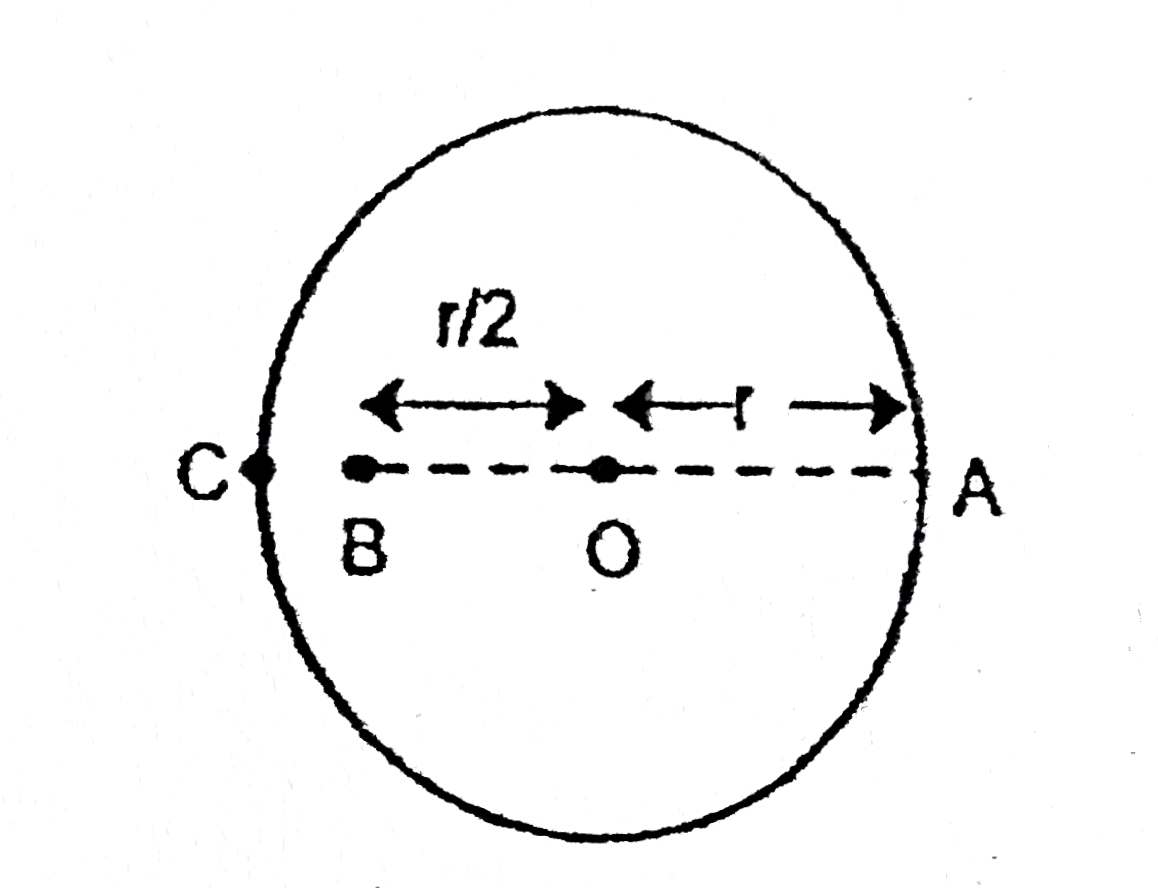A particle of mass m rotates in a circle of radius a with uniform angular speed ω0. It is viewed from a frame rotating about the z-axis with a uniform angualr speed ω. The centrifugal force on the particle is
mω2a
mω20a
mω+ω022a
mωω0
To find the centrifugal force acting on a particle of mass m rotating in a circle of radius a with uniform angular speed ω0, as viewed from a frame rotating about the z-axis with a uniform angular speed ω, we can follow these steps:
1. Understanding Centrifugal Force:
The centrifugal force is an apparent force that acts outward on a mass moving in a circular path and is observed from a rotating reference frame. It is given by the formula:
Fcentrifugal=m⋅ω2effective⋅r
where ωeffective is the effective angular speed in the rotating frame and r is the radius of the circular path.
2. Identifying Angular Speeds:
In our case, we have two angular speeds:
- The angular speed of the particle, ω0.
- The angular speed of the rotating frame, ω.
3. Calculating Effective Angular Speed:
The effective angular speed ωeffective in the rotating frame is the angular speed of the particle as viewed from that frame. Thus, it can be expressed as:
ωeffective=ω0−ω
However, since we are interested in the centrifugal force, we will consider the angular speed of the particle relative to the rotating frame.
4. Substituting into the Centrifugal Force Formula:
The centrifugal force can now be expressed as:
Fcentrifugal=m⋅(ω0)2⋅a
This is because the centrifugal force depends on the angular speed of the particle, which is ω0, and the radius a.
5. Final Expression:
Therefore, the centrifugal force acting on the particle is:
Fcentrifugal=m⋅ω20⋅a
6. Choosing the Correct Option:
Among the given options, the correct answer is:
Option B: mω20a
Summary of the Solution:
The centrifugal force on the particle is given by Fcentrifugal=mω20a.
The centrifugal force is an apparent force that acts outward on a mass moving in a circular path and is observed from a rotating reference frame. It is given by the formula:
Fcentrifugal=m⋅ω2effective⋅r
where ωeffective is the effective angular speed in the rotating frame and r is the radius of the circular path.
In our case, we have two angular speeds:
- The angular speed of the particle, ω0.
- The angular speed of the rotating frame, ω.
The effective angular speed ωeffective in the rotating frame is the angular speed of the particle as viewed from that frame. Thus, it can be expressed as:
ωeffective=ω0−ω
However, since we are interested in the centrifugal force, we will consider the angular speed of the particle relative to the rotating frame.
The centrifugal force can now be expressed as:
Fcentrifugal=m⋅(ω0)2⋅a
This is because the centrifugal force depends on the angular speed of the particle, which is ω0, and the radius a.
Therefore, the centrifugal force acting on the particle is:
Fcentrifugal=m⋅ω20⋅a
Among the given options, the correct answer is:
Option B: mω20a
The centrifugal force on the particle is given by Fcentrifugal=mω20a.
Topper's Solved these Questions
- BOOK - BITSAT GUIDECHAPTER - ROTATIONAL MOTIONEXERCISE - BITSAT Archives9videos
ROTATIONAL MOTION
- BOOK - BITSAT GUIDECHAPTER - NEWTONS LAWS OF MOTION AND FRICTIONEXERCISE - BITSAT Archives23videos
NEWTONS LAWS OF MOTION AND FRICTION
- BOOK - BITSAT GUIDECHAPTER - SCALARS AND VECTORSEXERCISE - All Questions34videos
SCALARS AND VECTORS
Similar Questions
Knowledge Check
- Question 1 - Select One
A particle of mass m rotates with a uniform angular speed ω. It is viewed from a frame rotating about the Z-axis with a uniform angular speed ω0. The centrifugal force on the particler is
Amω2aBmω20aCm(ω+ω02)2aDmωω0a - Question 2 - Select One
A thin circular disk of radius R is uniformly charged with density σ>0 per unit area.The disk rotates about its axis with a uniform angular speed ω.The magnetic moment of the disk is :
AπR4σωBπR42σωCπR44σωD2πR4σω - Question 3 - Select One or More
A particle is revolving in a circle of radius r and centre at 'O' with uniform angular velocity ω. Choose the correct option(s) :
 Athe ratio of angular velocity at A about O and about B is 3:2Bthe angular velocity at A about all points O,B and C is same.Cthe angular velocity at A about C is ω/2Dthe velocity at A and C are same.
Athe ratio of angular velocity at A about O and about B is 3:2Bthe angular velocity at A about all points O,B and C is same.Cthe angular velocity at A about C is ω/2Dthe velocity at A and C are same.
A particle of mass m is observed from an inertial frame of reference and is found to move in a circle of radius r with a uniform speed v. The centrifugal force on it is
View SolutionA particle is moving on a circular path of radius R with uniform angular speed ω. The magnitude of average velocityof particle during time t=0 to t=2π3ω:
View SolutionA particle of mass m is describing a circular path of radius r with uniform speed. If L is the angular momentum of the particle (about the axis of the circle), then the kinetic energy of the particle is given by
View SolutionA solid cylinder of mass M and radius R rotates about its axis with angular speed ω. Its rotational kinetic energy is
View SolutionA cylinder full of water is rotating about its own axis with uniform angular velocity ω. Then the shape of free surface of water will be
View Solution


